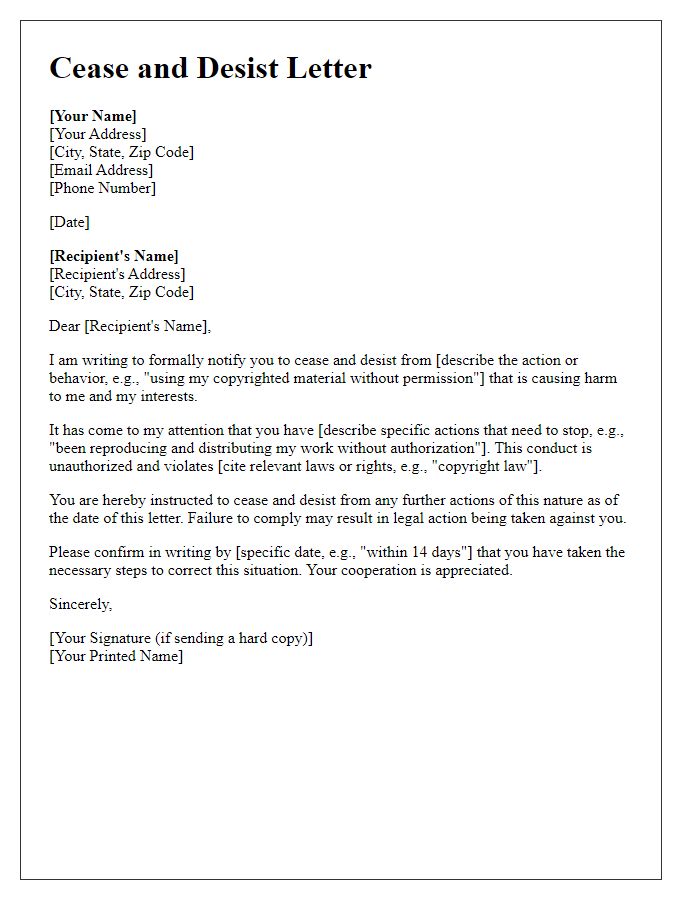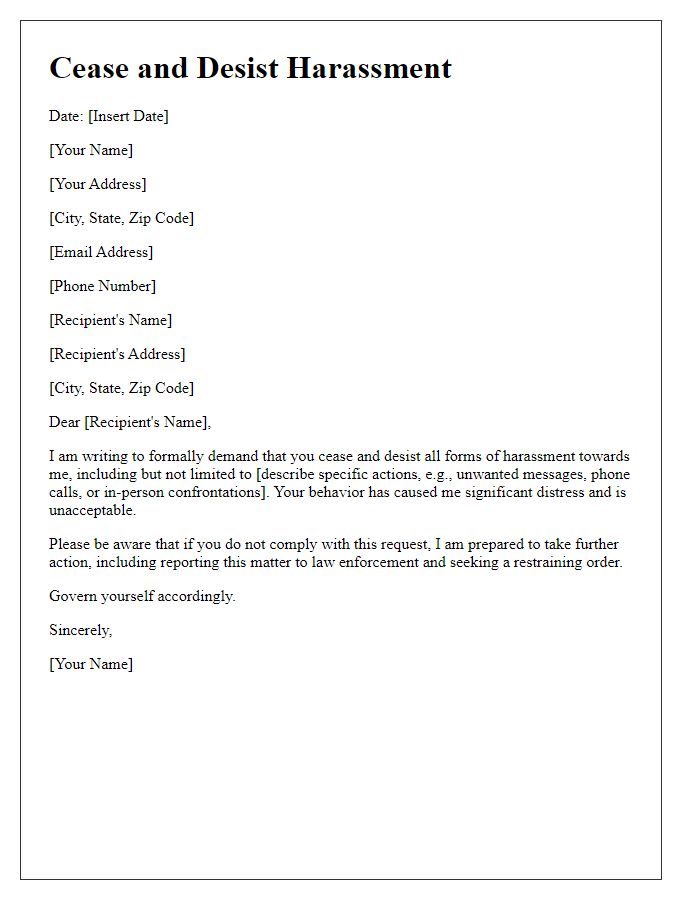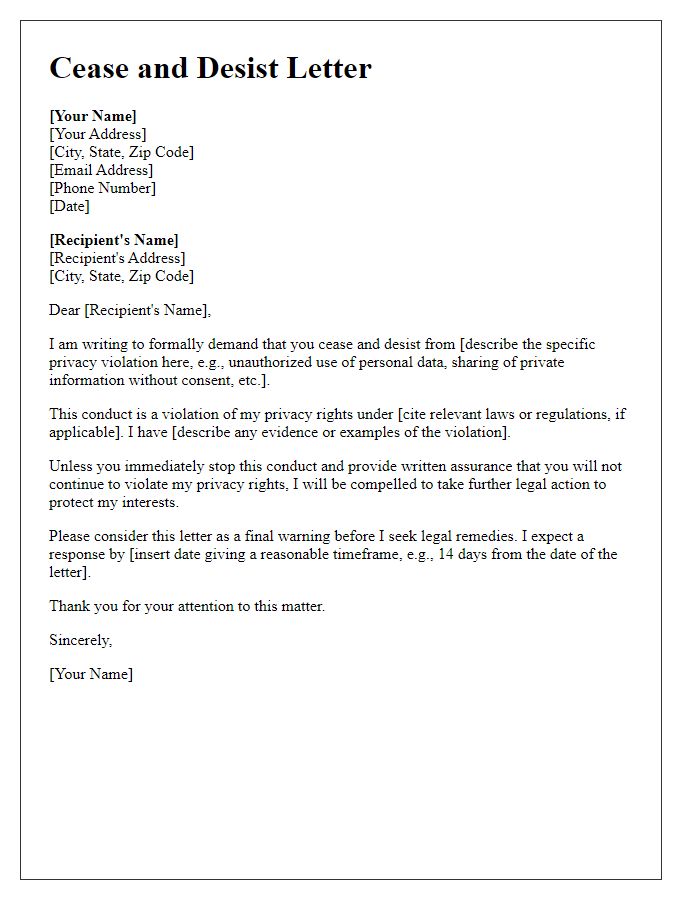Are you dealing with an issue that requires a formal response? A cease and desist notice is a crucial document designed to stop unlawful activities and protect your rights. Whether it's infringement of intellectual property, harassment, or other legal concerns, crafting an effective letter is essential for maintaining your interests. To help you navigate this process, read on for a detailed guide on creating a powerful cease and desist notice tailored to your specific situation.

Legal Definition and Purpose
A cease and desist notice serves as a legal document issued to an individual or entity, demanding that they stop engaging in certain activities deemed unlawful or infringing upon someone's rights. Key elements include identification of the sender, description of the offending behavior, reference to the applicable laws or regulations, and a clear directive to halt such actions immediately. This notice aims to prevent escalation to litigation by providing formal warning, establishing a record of complaint, and potentially facilitating the resolution of disputes prior to court involvement. Failure to comply with a cease and desist notice may lead to legal action, including lawsuits seeking damages or injunctions.
Specific Violations or Infringements
If an entity engages in trademark infringement, such as unauthorized use of a logo or brand name, legal action may be necessary. Infringements may occur in various forms, including counterfeit goods being sold online via platforms like eBay or Amazon. Specific violations often involve unauthorized reproduction of copyrighted materials, which may be protected under Title 17 of the U.S. Code. This can include websites that unlawfully distribute protected software, leading to significant financial losses for the rightful owners. Moreover, instances of patent infringement may arise where a company produces a product that closely resembles a patented device, violating the patent-holder's rights under the U.S. Patent Act (35 U.S.C. SS 271). These situations can lead to formal cease and desist notices, serving as a warning to stop these illegal activities immediately to avoid further legal consequences.
Demand for Immediate Action
Cease and desist notices serve as formal legal requests for an individual or entity to stop a particular activity that is believed to infringe upon rights, cause harm, or violate legal agreements. Such notices often specify the exact nature of the infringement, detailing how it contravenes established laws or contractual obligations. For instance, copyright infringement may involve unauthorized use of protected works, while trademark violations can concern the misuse of established brand identities. Clear communication regarding the expectations for compliance and potential consequences of non-compliance, including legal action, is essential in order to convey the urgency and seriousness of the demand. Additionally, the notice should provide a timeframe for the recipient to cease the specified activities, usually within a specified number of days, such as 10 to 30 days, ensuring that the issuer retains a record of all correspondence related to the matter for any potential future disputes.
Consequences and Legal Action Threat
A cease and desist notice represents a formal warning to an individual or entity regarding alleged unlawful activities. Failure to comply may result in legal actions, potentially including lawsuits, monetary damages, or injunctions. Such notices often reference specific laws, such as intellectual property rights or nuisance claims, alongside potential consequences for non-compliance, which can escalate matters to court. Recipients are typically granted a set time frame, often 10 to 30 days, to resolve the issue prior to any litigation commencing. Notable cases of precedent in various jurisdictions may strengthen the sender's position, emphasizing the legal ramifications and urgency of adherence to the request. Legal practitioners recommend clear documentation and delivery methods, such as certified mail, ensuring the recipient cannot disregard the notification. It is crucial for both parties to understand their rights and obligations within the legal landscape governing their dispute.
Deadline for Compliance and Follow-Up Information
A cease and desist notice serves as an official warning to an individual or entity seeking to terminate specific activities deemed unlawful or infringing. Typically, this notice outlines a clear deadline for compliance, often ranging from 10 to 30 days, depending on the severity of the infringement or violation. It may include follow-up information detailing necessary actions to rectify the situation, such as contacting a legal representative or providing proof of compliance. The recipient's name, date of the notice, and specific grievances should be clearly articulated to ensure there is no ambiguity regarding the expectations. Addressing relevant legal statutes or regulations strengthens the authority of the notice.













Comments